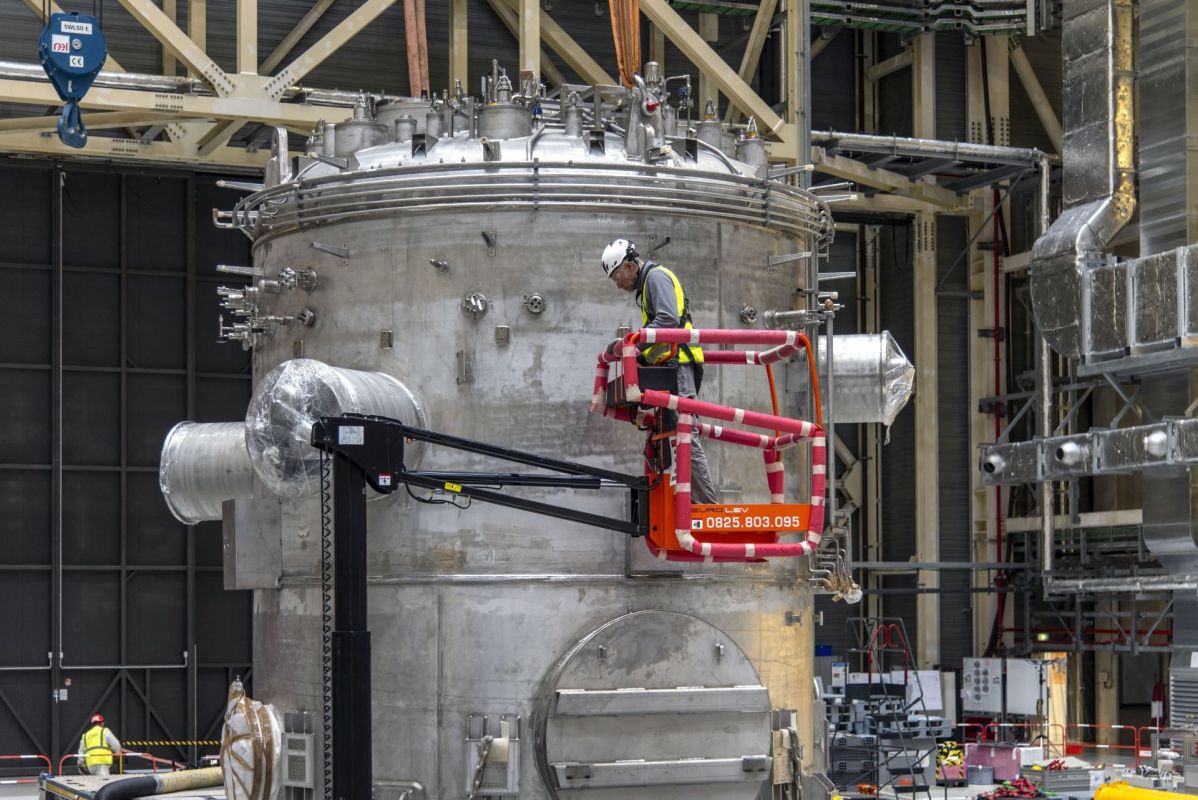While it may sound like part of the Mandalorian creed, experts at ITER claim "The Way" here on Earth is headed to an unimaginable goal: everlasting energy.
Experts at ITER, the International Thermonuclear Experimental Reactor (and also Latin for "the way," per the agency) are working to harness fusion reactions, the same energy source that powers the sun, according to the project's website.
If successful, the experts in southern France could provide a cleaner alternative to fossil fuels and nuclear fission with "arguably the most complex machine ever designed," ITER's communications lead Laban Coblentz told Euronews Next.
Nuclear energy is far from new science, and while there have been well-reported disasters, the technology is stable with the right personnel oversight and protection from natural disasters like earthquakes. Fission is used to power the 436 nuclear reactors around the world and requires slamming neutrons into larger atoms to create energy, splitting them into smaller particles. The process does not contribute significant greenhouse gases to the atmosphere, but it does produce radioactive waste.
Fusion, on the other hand, forms a heavier atom when two smaller particles slam together. The result is far more energy than fission, and without the radioactive waste, all per the United States Department of Energy.
The ITER team wants to prove that the process can be industrialized. They have been at work on the project since at least 2005. Testing includes the largest magnetic confinement chamber on the planet, which the researchers call a tokamak.
When complete, the chamber will weigh more than 25,000 tons, withstanding temperatures of up to 302 million degrees Fahrenheit. It creates power by using some of the hot particles to heat water, which would power a turbine via steam, all per Euronews.
The process requires unfathomable heat. For reference, USA Today reports that our 4.5 billion-year-old sun is 27 million degrees Fahrenheit at its core.
"You try to take something up to 150 million degrees [Celsius]. You try to make it the scale that is needed and so forth. It's just a difficult thing to do," Coblentz told Euronews.
The project hasn't been without setbacks. The cost was originally budgeted at about $5.5 billion. But Euronews reports that it's now nearly $22 billion. To stay on schedule, Coblentz told the online news agency that the experts plan to skip "first plasma" — a testing milestone — "to get to fusion power initially in 2035."
TCD Picks » Upway Spotlight
💡Upway makes it easy to find discounts of up to 60% on premium e-bike brands
"We'll make sure that that testing gets done in another way so that we can stick as much as possible to that date," he said.
He added that the complex nature of the project is a challenge, often because it is groundbreaking research.
"Simply due to the complexity and the multitude of first-of-a-kind materials, first-of-a-kind components in a first-of-a-kind machine," he said to Euronews.
This isn't the only team working on novel nuclear projects. American icon Westinghouse is developing a small fission reactor set to go online in 2029. It's unique because it's portable and can power remote locations for about eight years without water, reducing upward of 55,000 tons of air pollution annually, according to the company.
ITER's team is looking sunward for inspiration. And instead of waiting for the sunbeams to fall to our solar panels, they want to harness the source.
With planetwide overheating ravaging the world, the team is also feeling the heat.
"The longer that we wait for fusion to arrive, the more we need it," Coblentz said in the Euronews report. "So the smart money is: get it here as fast as possible."
Join our free newsletter for weekly updates on the coolest innovations improving our lives and saving our planet.














